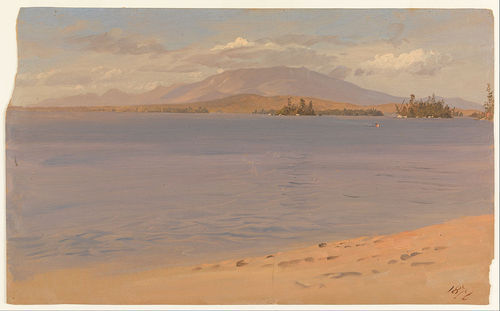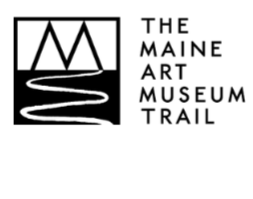Greatest Mountain on Display at the Abbe Museum
/
The exhibit, a vision by Penobscot artist and historian James Francis, is a tribute to Mount Katahdin
The Abbe Museum, the first and only Smithsonian Affiliate in the state of Maine, is pleased to announce the opening of Greatest Mountain, a tribute to Mount Katahdin. Curated by Penobscot artist and historian James Francis, the exhibit is a combination of research, both through Penobscot histories and accounts of non-Native travelers and writers, with images, music, stories, and the Penobscot language, all of which bring this sacred mountain to life. Greatest Mountain will be in the Abbe’s main gallery through August 2015.
Katahdin translates from Penobscot to English as “Greatest Mountain.” While some say this reflects the fact that Katahdin is the highest mountain in Maine, Francis points out that when the mountain was given this name by the Penobscot people, Maine and its boundaries did not exist, and the Wabanaki people were certainly familiar with higher mountains in their traditional territory, in what is now New Hampshire.
Images move and flicker across Greatest Mountain, a compilation of time-lapse photographs taken by Francis at night back in November 2014. The images were captured from Millinocket Lake, looking toward Katahdin’s south face. Francis went to the mountain and set up his camera to take repeated 6-second exposures. When he came back to the camera in the middle of the night, he discovered a wonderful, additional gift: the northern lights had come out to frame the mountain. Along with these time-lapse photographs, there is a song composed by Francis, various other video and still imagery, and spoken word pieces of Penobscot people sharing stories.
Greatest Mountain will be in the main gallery of the Museum’s downtown Bar Harbor location through August. Open daily from 10 am to 5 pm, admission is $8 per adult, $7 for senior citizens, $4 for children ages 11 – 17, and children 10 and under are free. Admission is free to Native Americans and Abbe members.
The Abbe Museum, the first and only Smithsonian Affiliate in the state of Maine, is pleased to announce the opening of Greatest Mountain, a tribute to Mount Katahdin. Curated by Penobscot artist and historian James Francis, the exhibit is a combination of research, both through Penobscot histories and accounts of non-Native travelers and writers, with images, music, stories, and the Penobscot language, all of which bring this sacred mountain to life. Greatest Mountain will be in the Abbe’s main gallery through August 2015.
“Greatest Mountain is the fascinating and engaging result of James's unique perspective as an artist, historian, guide, and Penobscot tribal member,” said Julia Clark, director of collections & interpretation at the Abbe. “Together, these result in a view of Katahdin unlike any other.”
Katahdin translates from Penobscot to English as “Greatest Mountain.” While some say this reflects the fact that Katahdin is the highest mountain in Maine, Francis points out that when the mountain was given this name by the Penobscot people, Maine and its boundaries did not exist, and the Wabanaki people were certainly familiar with higher mountains in their traditional territory, in what is now New Hampshire.
Images move and flicker across Greatest Mountain, a compilation of time-lapse photographs taken by Francis at night back in November 2014. The images were captured from Millinocket Lake, looking toward Katahdin’s south face. Francis went to the mountain and set up his camera to take repeated 6-second exposures. When he came back to the camera in the middle of the night, he discovered a wonderful, additional gift: the northern lights had come out to frame the mountain. Along with these time-lapse photographs, there is a song composed by Francis, various other video and still imagery, and spoken word pieces of Penobscot people sharing stories.
Greatest Mountain will be in the main gallery of the Museum’s downtown Bar Harbor location through August. Open daily from 10 am to 5 pm, admission is $8 per adult, $7 for senior citizens, $4 for children ages 11 – 17, and children 10 and under are free. Admission is free to Native Americans and Abbe members.








